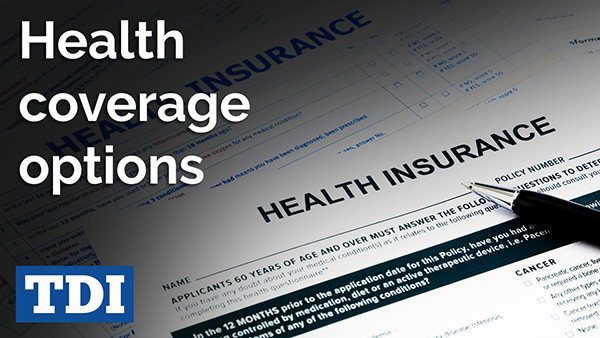How Do I Know If My Insurance Covers Dental? Uncover Now!

To determine if your insurance covers dental, review your policy details or contact your insurance provider. Check your benefits summary for specific dental coverage information.
Navigating the world of insurance coverage can often be confusing, particularly when trying to understand the specifics of dental benefits. Understanding your dental insurance coverage is crucial to maximize your benefits and minimize out-of-pocket expenses. Start by examining your insurance documentation, where you’ll usually find a breakdown of covered procedures, from routine cleanings to more complex dental work.
For a clear and direct answer, your best approach is to call the customer service number provided by your insurer. They can explain coverage limits, deductibles, co-pays, and any necessary pre-authorizations for dental services. As an informed policyholder, you’ll be able to make better decisions about your dental health and budget accordingly. Always remember to keep your policy information handy for quick reference and ensure you’re in-network to avoid additional charges.
Assessing Insurance Plans
Understanding your policy documents is essential to know if your dental needs are covered. Begin by reviewing your insurance policy, focusing on the section that outlines the dental coverage. This section should detail the types of procedures covered, whether preventive care, basic treatments, or major services. Check for any specific exclusions or clauses that may affect your coverage.
Identify coverage limits to avoid unexpected expenses. Look for information on annual maximums, deductibles, and co-payments. Know what your plan considers as a covered expense and the percentage of the cost you are responsible for. This helps in planning your dental expenses accordingly.
Distinguishing between in-network and out-of-network providers can also impact your out-of-pocket costs. In-network dentists usually offer services at a negotiated rate, leading to lower costs for you. Out-of-network providers may result in higher expenses and additional paperwork. Ensure you understand the financial implications of choosing a provider outside your insurance network.
Decoding Dental Coverage Terms
Understanding your dental insurance starts with recognizing what ‘Preventative Services’ entails. Typically, these services include routine exams, cleanings, and X-rays. They are often fully covered or require a small co-payment, emphasizing the insurance’s focus on preventing dental issues.
‘Basic Restorative’ services are slightly more extensive, generally covering procedures like fillings and extractions, while ‘Major Restorative’ services might involve crowns, bridges, and root canals. Policies can vary significantly in how they contribute to these costs, with some offering a 50-80% coverage range after deductibles are met.
| Annual Maximums | Deductibles |
|---|---|
| The cap on what an insurance plan will pay within one year. | The out-of-pocket amount you pay before your insurance starts to cover services. |
| Can greatly affect out-of-pocket costs if extensive work is needed. | Can vary from low to high; higher deductibles might lower premium costs but increase initial out-of-pocket expenses. |
Analyzing these terms and their implications on your financial responsibility is essential. Contacting your insurance provider or carefully reviewing your insurance policy will shed more clarity on coverage specifics.
Navigating Through Common Procedures
Determining whether your insurance plan covers dental procedures involves a detailed review of your policy. To ensure routine exams are covered, directly reference your insurance documentation or contact your provider. Most plans typically include these preventive services, understanding that they are integral to maintaining oral health.
Fillings and crowns fall under common restorative procedures, and coverage can vary widely between plans. Check your policy’s fine print for specified limits or waiting periods. Reach out to your insurance company for precise figures on co-payments or deductibles pertinent to these treatments.
Regarding orthodontic treatments, coverage is less frequent and often comes with age restrictions or higher co-pays. An overview of your plan’s benefits booklet or a call to customer service should clarify the extent of insurance support for procedures such as braces or Invisalign.
Contacting Your Insurance Provider
Contacting your insurance provider is crucial to determine if your dental services are covered. Prepare strategically formulated questions for customer service to ensure clarity and completeness of the information. It’s essential to know your policy number, as this is often the first piece of information that representatives will request to access your account details.
Documenting conversations with your insurance provider can be incredibly helpful, especially for complex inquiries or claims. Take note of the representative’s name, the time and date of the call, and any reference numbers associated with your case. This documentation could prove invaluable in the event of a dispute or as a reference for future discussions about your coverage.
Utilizing Additional Resources
Understanding your insurance coverage for dental services can be facilitated through the use of online portals provided by insurance providers. These portals often allow policyholders to review benefits, check service eligibility, and understand their coverage details by logging into their accounts.
Furthermore, many dentists offer insurance check services to assist patients. During your visit, the dental office’s staff can verify your insurance coverage and provide a clear understanding of what treatments are covered before any work is done.
For personalized assistance, independent insurance agents can be invaluable. These professionals can interpret the specifics of your policy and provide guidance on maximizing your dental insurance benefits, even when dealing with complex or ambiguous coverage situations.

Credit: humanservices.arkansas.gov
Frequently Asked Questions Of How Do I Know If My Insurance Covers Dental
What Is The Most Common Type Of Dental Insurance?
The most common type of dental insurance is Preferred Provider Organization (PPO) plans. They offer a balance of affordability and flexibility in choosing dentists.
Which Type Of Dental Care Would Cover The Cost Of Fillings?
Dental insurance plans typically cover the cost of fillings. Basic dental procedures, like fillings, are usually included. Always check your specific coverage details.
Is Teeth Whitening Covered By Insurance?
Typically, dental insurance does not cover teeth whitening as it’s considered a cosmetic procedure. It’s best to check with your specific provider for details on your coverage.
What Does Dental Insurance Usually Cover?
Dental insurance typically covers preventative care like cleanings, exams, and X-rays. It may also partially cover fillings, extractions, and sometimes major procedures such as root canals and crowns, based on your specific policy details.
Conclusion
Navigating the maze of dental insurance coverage can seem daunting at first. Yet, with the right approach, you can easily determine if your policy includes dental care. Remember to review your plan details, consult with your insurance provider, and stay informed about the specifics of your coverage.
Regular check-ins with your dental office also help ensure that your smile stays healthy while your finances remain intact. Stay proactive about your dental health insurance to bite into life’s challenges without fear.









